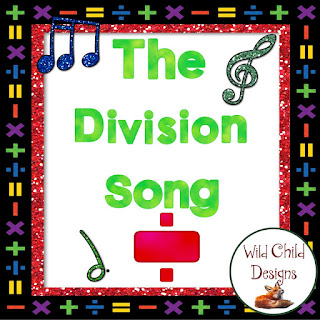Music is a powerful medium. How many times have you heard a song from your past and been transported back in time? It might even trigger emotions. When I hear "Stairway to Heaven," I'm back at a high school dance with my arms clenched around Wayne, my first boyfriend, my head buried in his shoulder. I feel nostalgic. I remember the excitement of getting ready for that dance. That's what music does...it transports us to different places and times in our lives...our memories are more vivid because music is connected to them.
So as teachers, why wouldn't we use it to tattoo our students' minds?
One of most favorite piggyback song efforts occurred while I was stuck in a major traffic jam on a 4-hour drive home from my parents' house. My kids were having trouble with the huge amount of geometry vocabulary in our current math unit. I was bored. So, I "wrote" 8 geometry songs to cement the vocabulary. By the time I got home, I had mentally outlined a script for a geometry musical! I wrote the play over the next three days, and the rest is history! There are three steps I've used to guide teachers in writing their own instructional piggyback songs. Watch the video below to learn about them!
- Don't use the same melody for more than one song. You want THAT particular tune to be attached to THAT particular concept.
- Start out with easy ditties first, like "Mary Had a Little Lamb."
- Don't forget to "unpack" the lyrics with your students. Use them as a lesson. Do a CLOSE READ with your song lyrics.
- After you get more practiced, try writing them WITH your students. They'll be even more motivated because they helped author it.
- Put your I'm-tone-deaf-I-don't-even-sing-in-the-shower crud away. Your kids do NOT care. Truly.
- Revisit your songs often. They are a great way to review. Repetition, repetition, repetition.
- Add movements to your songs and you'll double the learning whammy. Bodily-kinesthetic approaches are just as powerful!
- Laugh! Don't take yourself so seriously.
Working with non-musician teachers, I know how daunting it can be to incorporate music into your pedagogy. So I've put together a little "I-don't-even-know-where-to-start" goodie for you. If you click on the picture below, you'll find a freebie that outlines 20 ways to incorporate music in your classroom, a list of 30 instrumental songs that are perfect for classroom use (think "YouTube"), and a list of 41 melodies that work well for creating your own piggyback songs. But will you do me a favor? I LOVE hearing about how other teachers incorporate music in their classrooms. If you've done this, please share in the comments section.
To hear excerpts from a couple of my students' most favorite songs click here and listen to the start of this podcast! You won't be sorry!
Until next time, teach on, my friend!




































